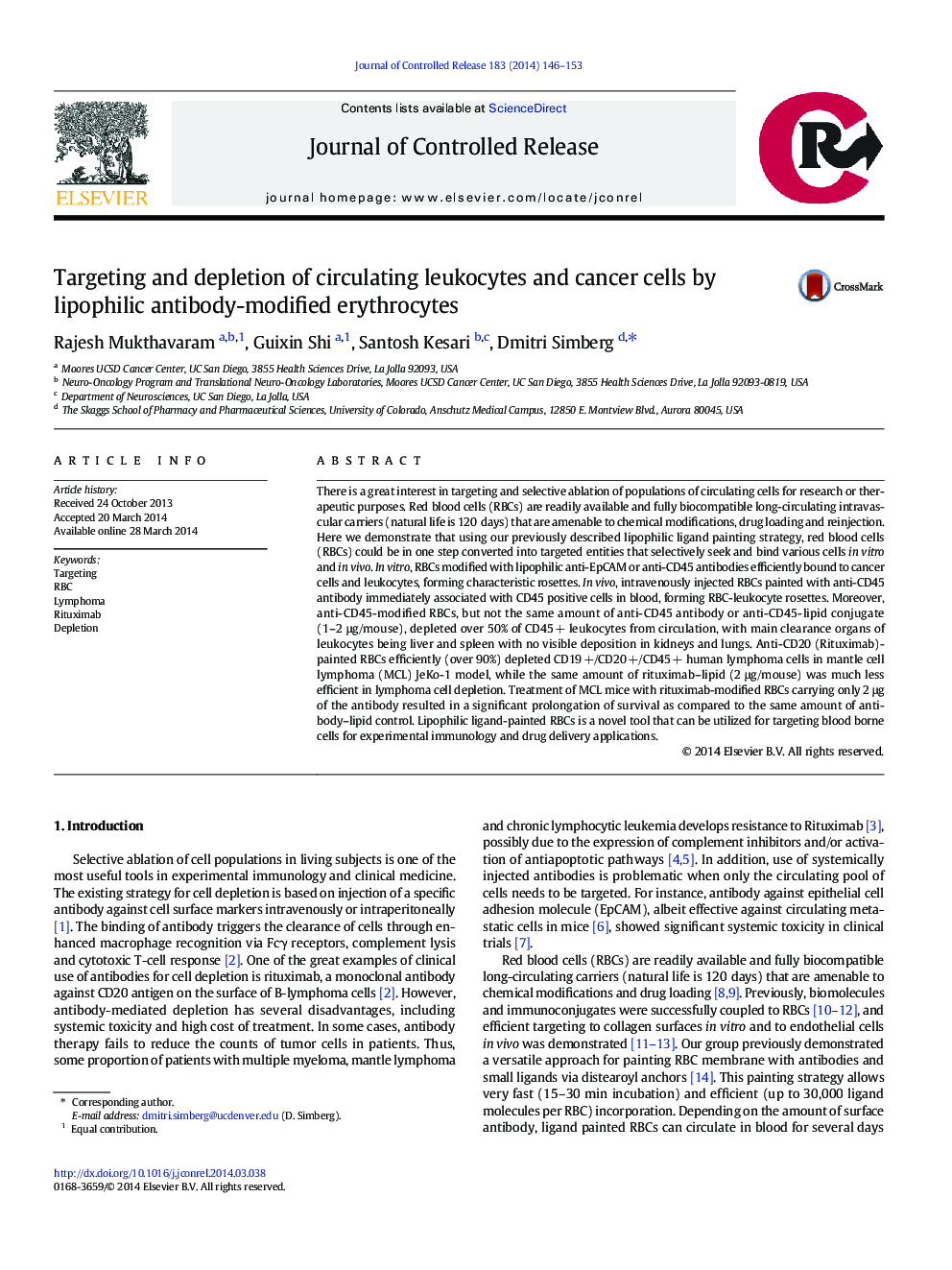| Article ID | Journal | Published Year | Pages | File Type |
|---|---|---|---|---|
| 1424005 | Journal of Controlled Release | 2014 | 8 Pages |
There is a great interest in targeting and selective ablation of populations of circulating cells for research or therapeutic purposes. Red blood cells (RBCs) are readily available and fully biocompatible long-circulating intravascular carriers (natural life is 120 days) that are amenable to chemical modifications, drug loading and reinjection. Here we demonstrate that using our previously described lipophilic ligand painting strategy, red blood cells (RBCs) could be in one step converted into targeted entities that selectively seek and bind various cells in vitro and in vivo. In vitro, RBCs modified with lipophilic anti-EpCAM or anti-CD45 antibodies efficiently bound to cancer cells and leukocytes, forming characteristic rosettes. In vivo, intravenously injected RBCs painted with anti-CD45 antibody immediately associated with CD45 positive cells in blood, forming RBC-leukocyte rosettes. Moreover, anti-CD45-modified RBCs, but not the same amount of anti-CD45 antibody or anti-CD45-lipid conjugate (1–2 μg/mouse), depleted over 50% of CD45 + leukocytes from circulation, with main clearance organs of leukocytes being liver and spleen with no visible deposition in kidneys and lungs. Anti-CD20 (Rituximab)-painted RBCs efficiently (over 90%) depleted CD19 +/CD20 +/CD45 + human lymphoma cells in mantle cell lymphoma (MCL) JeKo-1 model, while the same amount of rituximab–lipid (2 μg/mouse) was much less efficient in lymphoma cell depletion. Treatment of MCL mice with rituximab-modified RBCs carrying only 2 μg of the antibody resulted in a significant prolongation of survival as compared to the same amount of antibody–lipid control. Lipophilic ligand-painted RBCs is a novel tool that can be utilized for targeting blood borne cells for experimental immunology and drug delivery applications.
Graphical abstractFigure optionsDownload full-size imageDownload high-quality image (167 K)Download as PowerPoint slide
